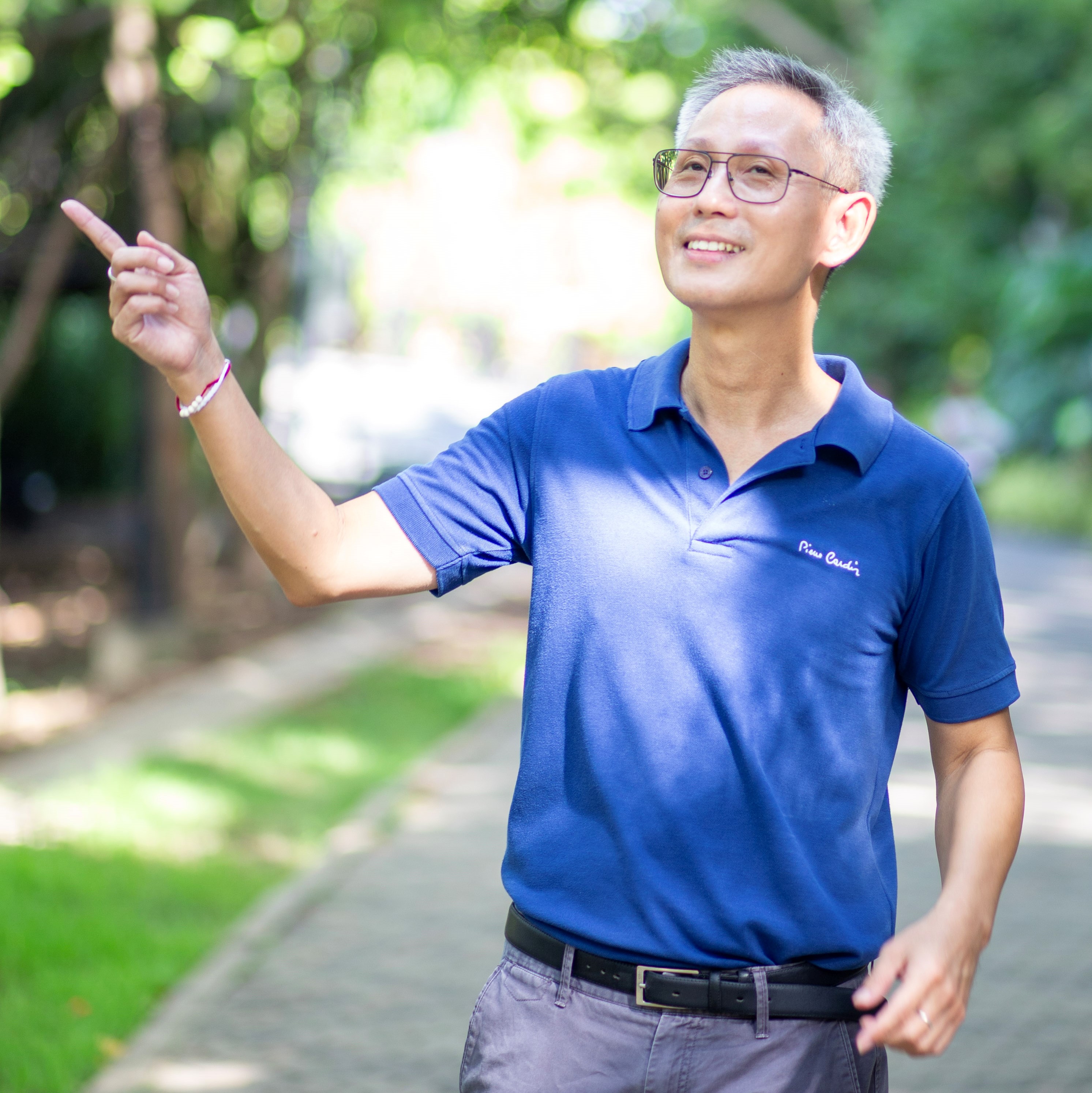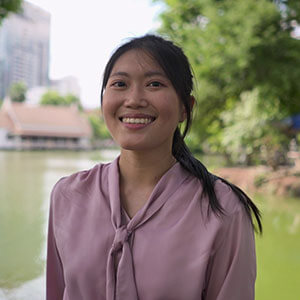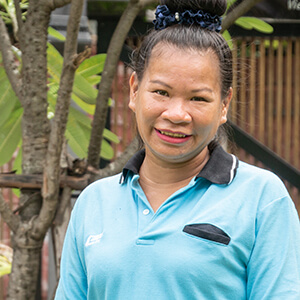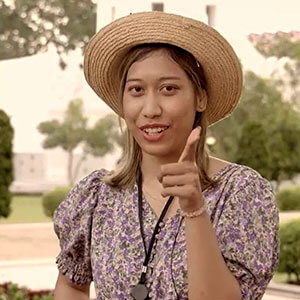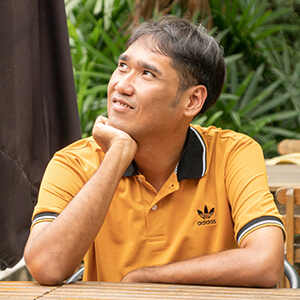Practical insights from Guide Apple‘s extensive experience helping first time visitors explore Bangkok authentically and safely
Cultural Etiquette & Common Mistakes
“What’s the biggest cultural mistake you see first-time visitors make, and how can they avoid it?”
Apple: “They thought that all Asians use chopsticks and are surprised when they find out Thais don’t. As a tour guide, I will explain to them that Thais mostly use spoons and only use chopsticks for noodles.”
More Context: This reflects a broader assumption many first time visitors make about Asian cultures being uniform. In Thailand, the traditional eating utensil is actually a spoon (held in the right hand) paired with a fork (held in the left hand) to push food onto the spoon. Chopsticks are reserved specifically for noodle dishes like Pad Thai, boat noodles, or Chinese-style noodle soups.
Additional Cultural Tips:
- Language misconceptions: Many visitors assume Southeast Asian countries share similar languages, but this isn’t the case. Thai is distinct, with its own script and a tonal system where the same word can change meaning depending on the tone used.
- Religious assumptions: While Buddhism is predominant, Thailand has diverse religious communities including Muslims, Christians, and Hindus
- Modern vs. traditional: Bangkok is a cosmopolitan city with modern infrastructure, not the rural experience some visitors expect
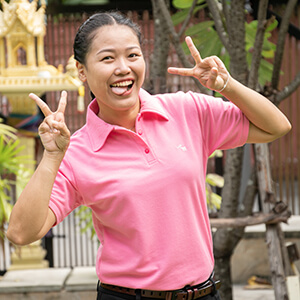
Waree ‘Apple’ Singhanart
Tour Guide License No. 1-029055
“How should visitors properly interact at temples: what do locals actually do vs. what guidebooks say?
Apple: “Temples are sacred areas for locals. Visitors should behave respectfully by not wearing sexy clothes, don’t kissing and don’t make fun of statues.”
Enhanced Temple Etiquette Guide:
- Dress Code
- Guidebooks say: cover shoulders and knees.
- What locals do: most Thais dress modestly, but you’ll often see people in casual clothes if they’re just stopping briefly. At major temples (Grand Palace, Wat Pho) stricter standards apply, so borrow or buy a sarong if needed.
- Footwear
- Guidebooks say: always remove shoes.
- What locals do: exactly that, but many also slip off shoes quickly outside smaller shrines without fuss. Easy-on sandals are practical.
- Behavior
- Guidebooks say: be quiet and respectful.
- What locals do: speak softly, bow slightly to images, and sit with feet tucked under. Don’t stretch legs out toward Buddha images.
- Photography
- Guidebooks say: avoid flash, respect ‘no photo’ signs.
- What locals do: many snap quick photos, but never during prayers or in restricted zones. Always ask before photographing people at worship.
- Local Observances
- Guidebooks say: you can visit anytime.
- What locals do: many come at dawn (6–8 AM) or evening (5–7 PM) when temples are cooler, quieter, and ceremonies often take place. Our private tours can time visits before 9 AM to capture this atmosphere.
- Donations
- Guidebooks say: donations are optional.
- What locals do: almost everyone gives a small amount (20–100 baht) and lights incense or candles as part of their visit.
- Monk Interaction
- Guidebooks say: don’t touch monks.
- What locals do: men may interact directly; women place offerings on a cloth or tray so there’s no direct hand-to-hand contact.
Transportation & Navigation
Apple: “No tuk tuk without a local, download Grab, BTS and MRT are the best way to explore city.”
Enhanced Transportation Strategy:
BTS Skytrain & MRT Subway:
- Cost: 16 to 59 Baht per trip depending on distance
- Tourist passes: 1 day unlimited (140 Baht) or 3 day (350 Baht)
- Peak hours to avoid: 7-9 AM and 5-7 PM
- Navigation: Download BTS/MRT apps; signs in Thai and English
- Accessibility: Most stations have elevators; announce station names in English
Grab (Recommended):
- Fixed pricing: No negotiation needed, upfront fare display
- Safety: Driver details and GPS tracking shared
- Payment: Cash or card accepted by many drivers
- Availability: Usually 3 to 5 minute wait times in central Bangkok
Taxi Guidelines:
- Meter rule: Always insist “By meter please” (bai mee-ter ka/krub)
- Fair rates: Starting 35 Baht + 5.5 Baht per km
- Airport surcharge: 50 Baht additional from Suvarnabhumi airport
- Avoid: Taxis parked at tourist sites (often refuse meter)
Tuk-Tuk Reality Check:
- Tourist pricing: 3-5x normal taxi rates
- Scam routes: May take you to commission shops
- When to use: Short distances (under 2 km) for the experience, not efficiency
- Negotiation: Agree on price beforehand; expect 100-300 Baht for short rides

Food Safety & Dining Culture
“How do you teach visitors to identify clean, safe street food stalls?”
Apple: “Most street food are clean and safe to try but sometimes will make your tummy feel weird because of the different ingredients your tummy hasn’t familiar with. For first try, choose any food that cooked fresh and warm.”
More on Street Food Safety:
Visual Cleanliness Indicators:
- High turnover: Lines of locals eating (fast turnover = fresh food)
- Active cooking: Food prepared to order, not sitting pre-cooked
- Clean workspace: Organized ingredients, clean utensils
- Vendor appearance: Clean apron and clothes, good hygiene practices
Safe Choices for First Timers:
- Grilled items: Satay, grilled chicken, corn on the cob
- Fried foods: Pad Thai cooked fresh, fried rice, spring rolls
- Soup dishes: Tom Yum, boat noodles (high temperature kills bacteria)
- Fresh fruit: Choose vendors who peel/cut to order
Items to Approach Cautiously:
- Raw vegetables: Som tam (papaya salad) if you have sensitive stomach
- Seafood: Ensure it smells fresh and is fully cooked
- Drinks & Ice: Commercially produced ice (clear cubes with a hole in the middle) is usually safe. Avoid ice of uncertain origin, such as homemade hotel ice or block ice from informal stalls. Stick to bottled or sealed drinks.
Stomach Adjustment Tips:
- Start with milder, cooked dishes before trying spicy street food
- Carry probiotics or stomach remedies for first few days
- Stay hydrated but avoid tap water (bottled water is everywhere and so cheap)
“What’s a typical eating mistake tourists make that locals would never do?”
Apple: “Don’t put the rice into the soup or curry and don’t scoop all food into your dish all at once.”
Further on Thai Dining Etiquette:
Proper Thai Dining Style:
- Sharing culture: Order multiple dishes to share (typically 1 dish per person + 1 extra)
- Rice serving: Take 2 or 3 spoonfuls of your rice, add small portions of the shared dishes
- Eating pace: Take small amounts throughout the meal, not large portions at once
- Soup consumption: Soup is consumed alongside rice, not mixed together
Additional Table Manners:
- Fork and spoon: Fork pushes food onto spoon; don’t put fork in mouth
- Serving others: Offer to serve companions before serving yourself
- Bone disposal: Place bones on separate plate or table edge, not your eating plate
- Finish your plate: Leaving food suggests you didn’t enjoy it or portions were too large
Restaurant vs. Street Food Differences:
- Restaurants: More formal sharing style with individual rice portions
- Street food: Often individual servings, more casual eating

“How do you handle dietary restrictions and allergies when ordering in local places?”
Apple: “I always write down a note in Thai for my clients about their food restrictions and allergies so they can show the staff before ordering food.”
More on Dietary Navigation:
Essential Thai Phrases (Phonetic):
- Vegetarian: “Gin jay” (กินเจ) – strict Buddhist vegetarian
- No meat: “Mai sai neua” (ไม่ใส่เนื้อ)
- No pork: “Mai sai moo” (ไม่ใส่หมู)
- No seafood: “Mai sai talay” (ไม่ใส่ทะเล)
- Allergy: “Phae” (แพ้) – “I’m allergic to…”
- Spicy: “Mai pet” (ไม่เผ็ด) – not spicy
Safe Restaurant Choices:
- Hotel restaurants: Usually accommodate allergies and speak English
- International chains: Subway, McDonald’s, etc. for familiar options
- Vegetarian restaurants: Clearly marked “เจ” (jay) restaurants throughout Bangkok
Hidden Ingredients to Watch:
- Fish sauce: In most Thai dishes (even vegetarian-appearing ones)
- Shrimp paste: Common in curry pastes and som tam
- Oyster sauce: In stir-fries and noodle dishes
- Pork: Often mixed into seafood dishes or used for flavoring
Local Experiences & Hidden Gems
“Where do you take visitors who want to see ‘real Bangkok’ beyond the tourist sites?”
Apple: “I like to take them to local communities for example: Wang Lang Market, Talat Noi, Kudee Jeen, Amulet market.”
More on Local Experience:
Wang Lang Market (Historic Riverside Market):
- Best time: Early morning (7-9 AM) for fresh produce and fewer crowds
- Highlights: 150 year old market selling fresh ingredients locals use daily
- Food specialties: Fresh tropical fruits, traditional snacks, boat noodles
- Cultural significance: Shows how Bangkok residents actually shop and eat
Talat Noi (Heritage Neighborhood):
- Character: Mix of Chinese shophouses, vintage auto parts shops, and hip cafes
- Photography: Street art, vintage signs, traditional architecture
- Authentic experience: Working neighborhood where residents go about daily life
- Hidden gems: Local coffee roasters, vintage shops, small family restaurants
Kudee Jeen (Santa Cruz Church Community):
- History: 200 year old Portuguese-Thai community
- Specialties: Traditional Thonburi desserts and community-based tourism
- Cultural exchange: One of Bangkok’s oldest multicultural neighborhoods
- Best experience: Join community cooking classes or cultural tours
Amulet Market (Spiritual Bangkok):
- Location: Around Wat Mahathat and Grand Palace area
- Cultural insight: Understanding Thai Buddhist spirituality and local beliefs
- Authentic interaction: Observe how locals select protective amulets
- Photography: Intricate displays and devoted local customers
Additional Local Experiences:
- Khlong Toei Market: Bangkok’s largest fresh market (early morning)
- Saphan Phut: Where locals buy wholesale clothing and accessories
- Wang Thonglang Market: Weekend market popular with Thai families
- Huai Khwang Night Market: Local night market with minimal tourists
Safety & Problem Solving
“What should visitors do if they’re uncomfortable in a situation but don’t want to be rude?”
Apple: “Just say no and get away from that situation as soon as possible. Don’t yell or show any anger.”
More on Safety & Conflict Resolution:
De-escalation Strategies:
- Polite but firm: “Mai ao kha/krub” (I don’t want it) with a smile
- Physical distance: Step back while speaking, create space
- Avoid confrontation: Thai culture values “keeping face” so anger brings shame to everyone
- Body language: Keep hands visible, avoid pointing, maintain calm demeanor
Common Uncomfortable Situations:
- Persistent vendors: Walk away while saying “Mai ao” (don’t want) repeatedly
- Tuk-tuk scams: “No thank you, I’m meeting someone” and keep walking
- Overcharging: Ask for receipt, suggest calling tourist police (1155)
- Inappropriate behavior: Move to crowded areas, ask for help from other tourists or staff
Emergency Contacts & Resources:
- Tourist Police: 1155 (English speaking support)
- Regular Police: 191
- Medical Emergency: 1669
- Bangkok Emergency Services: 199
Cultural Context:
- “Kreng jai” concept: Thais avoid confrontation and appreciate visitors who do the same
- Saving face: Don’t embarrass someone publicly, even if they’re wrong
- Community support: Locals will often help foreigners in genuine distress
Safe Havens:
- Shopping malls: Security guards and English speaking staff
- Hotels: Any hotel lobby, not just where you’re staying
- BTS/MRT stations: Security cameras and transit police
- 7-Eleven stores: Ubiquitous, well lit, usually with cameras
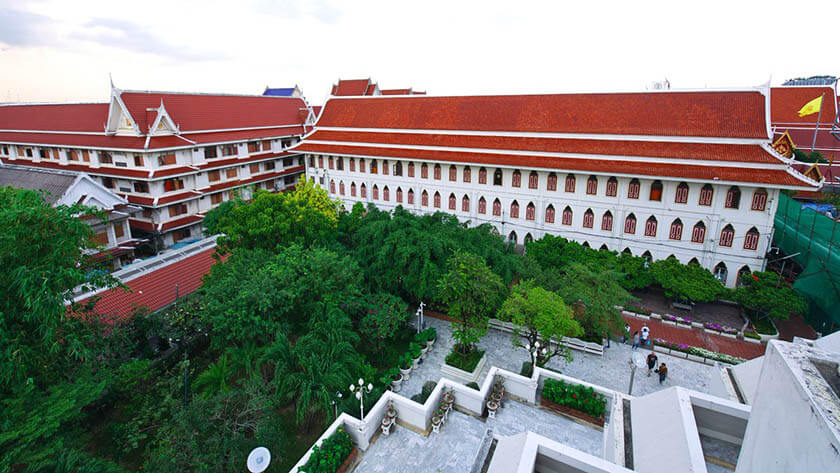
Practical Packing & Seasonal Tips
“What should people pack that they never think to bring?”
Apple: “Cooling powder will save your life!!”
More on Packing Essentials:
Cooling Powder Explained:
- What it is: Mentholated talcum powder (Snake Brand, Betadine brands)
- Where to buy: Any 7-Eleven, pharmacy, or supermarket (20-60 Baht)
- How to use: Apply to feet, back, underarms after showering
- Why essential: Prevents heat rash, reduces sweating, provides cooling sensation
Climate-Specific Packing List:
Hot Season (March-May):
- Cooling items: Portable fan, cooling towels, electrolyte packets
- Sun protection: SPF 50+ sunscreen, wide-brimmed hat, UV protection clothing
- Footwear: Breathable walking shoes, sandals that dry quickly
Rainy Season (June-October):
- Waterproof gear: Compact umbrella, waterproof phone case, quick dry clothing
- Footwear: Non-slip shoes, waterproof sandals (streets flood quickly)
- Health items: Antifungal powder, insect repellent with DEET
Cool Season (November-February):
- Layers: Light jacket for air-conditioned spaces, long pants for temples
- Comfortable walking gear: Broken-in shoes, moisture wicking socks
Year-Round Essentials:
- Health: Anti-diarrheal medication, hand sanitizer
- Electronics: Portable phone charger, international adapter (Type A, B, C)
- Cultural respect: Lightweight scarf or sarong for temple visits
- Practical: Tissue packs (not always available in restrooms), cash in small bills
Local Perspective & Cultural Understanding
“What do Bangkok locals actually think about tourists, and how can visitors be respectful guests?”
Apple: “Thai people are so kind and easy going. We welcome everyone. However, Thailand still has rules and regulations that visitors shouldn’t break. Treat each other respectfully is a common thing you should do no matter where you are.”
More on Cultural Understanding:
Thai Hospitality (“Nam Jai”):
- Genuine warmth: Thais take pride in welcoming guests and sharing their culture
- Patience with mistakes: Most locals understand cultural differences and appreciate effort
- Mutual respect: Visitors who show respect for local customs receive exceptional warmth
Appreciated Visitor Behaviors:
- Learning basic Thai: “Hello” (sawasdee), “thank you” (kob khun), “excuse me” (khor thot)
- Temple respect: Following dress codes and behavioral guidelines
- Tipping appropriately: 10% at restaurants, 20 or 40 Baht for services
- Queuing culture: Respecting lines at BTS, restaurants, attractions
- Removing shoes: In homes, some shops, all temple buildings
Cultural Sensitivities:
- Royal family respect: Never speak negatively about monarchy (serious legal consequences)
- Buddhist images: Don’t touch, point feet toward, or climb on Buddha statues
- Head touching: Never touch someone’s head, even children (considered sacred)
- Public displays: Minimal physical affection; hand holding acceptable but kissing inappropriate
Contributing Positively:
- Supporting local businesses: Choose local restaurants and markets over international chains
- Environmental consciousness: Use reusable water bottles, refuse single use plastic when possible
- Cultural exchange: Ask questions respectfully, share your own culture when invited
- Economic impact: Understand that tourism supports many local families’ livelihoods
Common Misconceptions to Avoid:
- Assuming poverty: Bangkok is a modern metropolis with wealthy and middle class citizens
- Stereotyping: Each person is an individual with unique education, interests, and perspectives
- Bargaining everywhere: Fixed prices are often found at malls, restaurants, and modern shops

Waree ‘Apple’ Singhanart
Tour Guide License No. 1-029055
Booking & Experience Information
About Guide Apple: Apple is one of Bangkok’s most requested private guides, known for her excellent English, cultural knowledge, and ability to customize experiences for first time visitors and food enthusiasts. Based on client feedback, she excels at:
- Making temples and cultural sites accessible and engaging
- Finding the best local food experiences safely
- Navigating Bangkok’s transportation system efficiently
- Adapting tours for families, couples, and solo travelers
This FAQ combines Guide Apple’s personal insights with practical information to help visitors have an authentic, safe, and respectful experience in Bangkok. For specific tour bookings and customized itineraries, contact Your Thai Guide directly.

